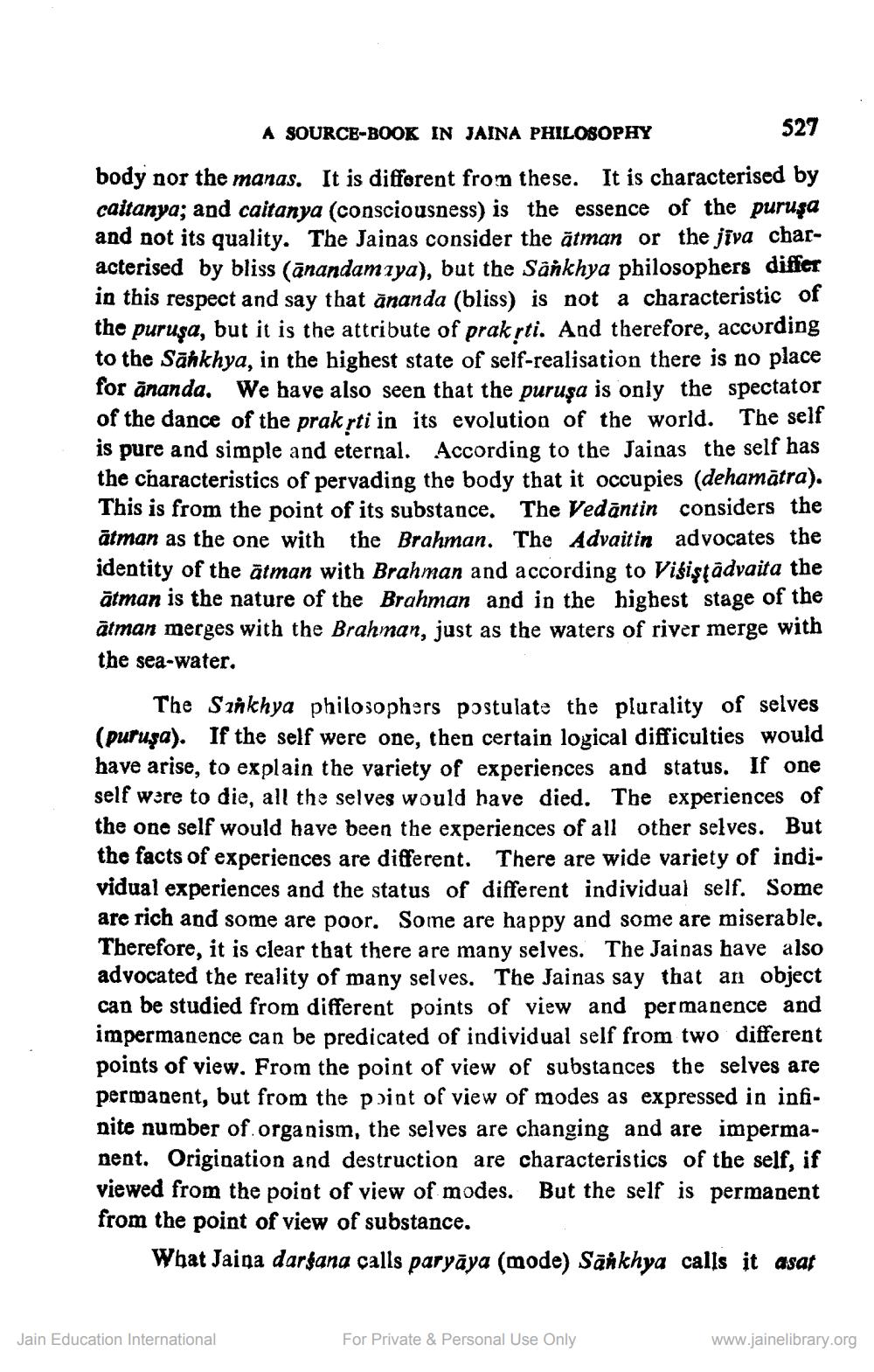________________
A SOURCE-BOOK IN JAINA PHILOSOPHY
527 body nor the manas. It is different from these. It is characterised by caitanya; and caitanya (consciousness) is the essence of the puruşa and not its quality. The Jainas consider the ātman or the jiva chacacterised by bliss (ānandamıya), but the Sankhya philosophers differ in this respect and say that ānanda (bliss) is not a characteristic of the puruşa, but it is the attribute of prakrti. And therefore, according to the Sähkhya, in the highest state of self-realisation there is no place for ananda. We have also seen that the puruşa is only the spectator of the dance of the prak rti in its evolution of the world. The self is pure and simple and eternal. According to the Jainas the self has the characteristics of pervading the body that it occupies (dehamätra). This is from the point of its substance. The Vedāntin considers the ātman as the one with the Brahman. The Advaitin advocates the identity of the ātman with Brahman and according to Visiştādvaita the ātman is the nature of the Brahman and in the highest stage of the ātman merges with the Brahman, just as the waters of river merge with the sea-water.
The Sinkhya philosophers postulate the plurality of selves (puruşa). If the self were one, then certain logical difficulties would have arise, to explain the variety of experiences and status. If one self were to die, all the selves would have died. The experiences of the one self would have been the experiences of all other selves. But the facts of experiences are different. There are wide variety of individual experiences and the status of different individual self. Some are rich and some are poor. Some are happy and some are miserable. Therefore, it is clear that there are many selves. The Jainas have also advocated the reality of many selves. The Jainas say that an object can be studied from different points of view and permanence and impermanence can be predicated of individual self from two different points of view. From the point of view of substances the selves are permanent, but from the point of view of modes as expressed in infinite number of organism, the selves are changing and are impermanent. Origination and destruction are characteristics of the self, if viewed from the point of view of modes. But the self is permanent from the point of view of substance.
What Jaina darsana calls paryāya (mode) Sänkhya calls it asat
Jain Education International
For Private & Personal Use Only
www.jainelibrary.org




